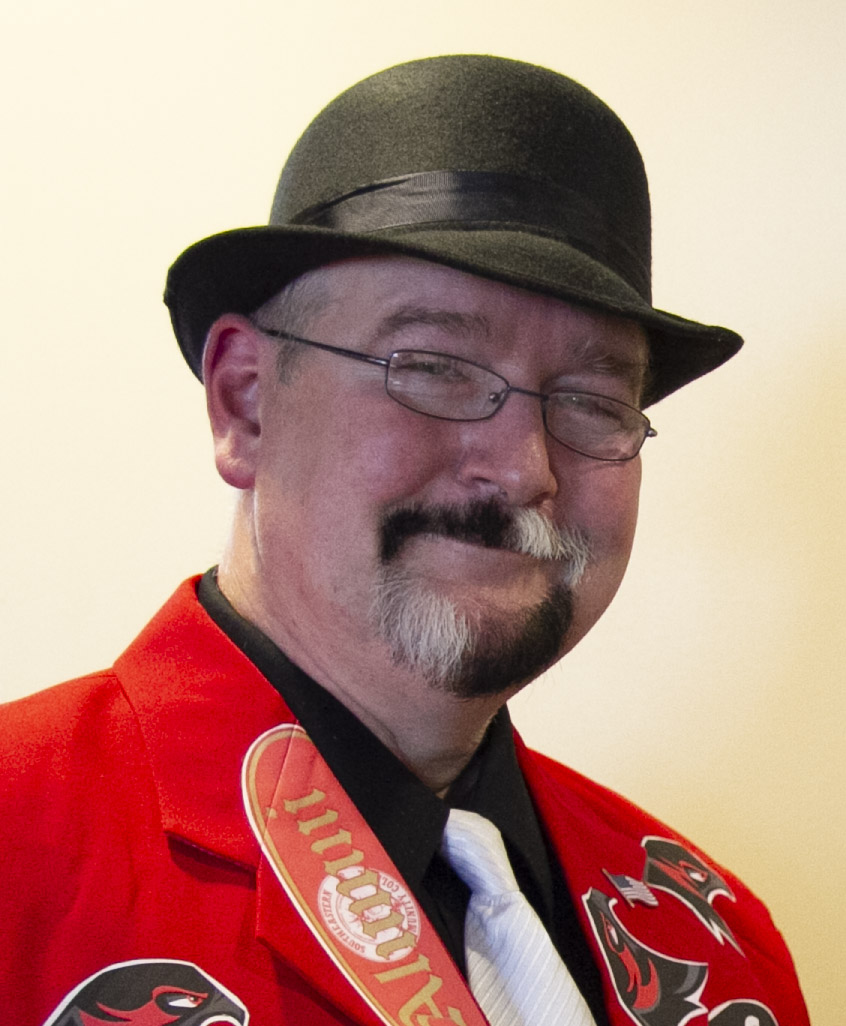By its very definition, surrealism is uncommon — in art or in life.
Burlington artist James Walker Henry resides in the surreal. He has lived there for nearly 40 years through his art. Blending natural artistic talent with out-of-sync images colored by current events, he has an eye for the surreal.
“If you look at my work, you’ll see I’ve dealt with nearly every subject there is,” he said.
Henry sharped those surrealist chops at Southeastern Community College from 2000 to 2006.
Henry ended up moving to Arizona with just five credits needed for graduation from SCC. He never had the chance to finish. Despite that fact, he was recognized as a distinguished alumnus in 2016.
Henry has a long working relationship with SCC, and one he is proud to have. He credits the West Burlington-based college for furthering his love of art. In turn, the college has supported his work by allowing him to display his pieces in its gallery.
In 2012, Henry was the featured artist at the Burlington Fine Arts League GALA.
“I was pretty proud of that,” he said.
Despite using current events as a backdrop, Henry stays apolitical during the painting process.
There are far too many purposely disconnected elements in a Henry painting to develop a coherent thesis. For Henry, art is about thinking with your gut.
“I feel like a historian documenting life,” he said.
His current artwork — an update of his highly praised and awarded painting Mourning Glory — commemorates the 20th anniversary of the Sept. 11 attack. The artwork consists of a portrait of Jesus hanging from the cross, draped in an American flag. A smoking passenger plane flies in front of him, headed straight for his torso.
“It’s a little bit bigger than the original. It’s 48-by-60,” Henry said.
Henry has established a name for himself as a Midwest surrealist and still manages to hold down a full-time bakery job. His morning routine hasn’t changed in nearly three decades.
“Usually, I get up at 4 in the morning to start painting,” he said. “I paint on the weekend and whenever I have free time.”
Henry’s work is in galleries around the world, including Chicago and New York. He is clad in a signature zoot suit — usually of wildly varying colors — at every artist reception he hosts. Even his goatee is dyed in unpredictable colors and patterns.
“I’m always producing. My painting and my art are on my mind all of the time,” he said.
Henry has created well over 1,000 pieces (some of the murals), participated in more than 350 exhibits and more than 100 solo shows, nationally and internationally. Henry also donated his paintings to organizations, such as schools and hospitals. His work has been reviewed in magazines, including Manhattan Arts, Surreal Magazine, Art Scope, New Art Examiner, and ArtSpeak. He also is published in the Who’s Who in American Art.
But early in the morning, when the sun has yet to lift, it is just Henry, his canvas, his paintbrushes, and a Salvador Dali-inspired imagination.
“Back here (in his home studio), I paint societal issues,” he said.
Regarding his time at SCC, Henry believes it helped shape him into the artist he has become.
“John Weyl was one of my instructors. I learned a lot from him,” Henry said.
by William Smith


